In this comment piece, Tim Phillips, Managing and Creative Director of Tilt Industrial Design, identifies three key initiatives for sustainability in 2024.

January 30th, 2024
The discipline of Industrial Design is effectively a strategic problem-solving process combining creativity and innovation, fuelled by an acute blend of technical design and engineering skills. As Industrial designers, we have the capacity to influence sustainability outcomes across the various stages of a product life cycle — meaning the positive contribution we can make in protecting environmental outcomes is significant, as a panel from the 2023 Sustainability Summit investigated.
In our role as Industrial Designers, we can create the greatest impact for architects, landscape architects, artists, and product manufacturers when introduced to a project at the concept stage. Leaning on our technical expertise in understanding manufacturing processes and materiality options, our involvement at this stage is essential to be able to successfully translate complex creative designs into functional and design-driven outcomes. The embedding of environmental objectives early into these briefs, allows us to bring stakeholders along the journey and prioritise sustainability-led design.
As moderator of the panel, I observed three key ideas influencing sustainability objectives within Industrial Design and its role in reshaping the development of our built environment.
1. Sustainability, alongside quality and aesthetics, remains a focus for designers
Regardless of their sustainable attributes, quality and aesthetics are still key considerations for designers and specifiers. Often, in order to produce a more environmentally conscious design, the aesthetics are compromised by the upcycling or recycling process. Striking the balance between less impact and emissions without affecting the overall aesthetic is a constant challenge that needs to be addressed. As industrial designers, we’re constantly seeking creative solutions to deliver function, innovation, quality and aesthetics, and we need to ensure that we are also continuing to drive more sustainable outcomes.
It’s encouraging to see designers of all specialties approach new projects from a full life-cycle perspective. Through a holistic review of the structure and materials within it, designers are finding creative solutions to reuse, repurpose and recycle, while not compromising on aesthetic outcomes.

2. New frameworks supporting a broader focus and long-term benefits are increasingly being considered across industries
Traditional leading metrics for product development success have largely focused on commercial viability and aesthetics, but in the contemporary landscape, metrics may now include social impact, recyclability, embodied energy, waste analysis and other social considerations.
The restructuring of these frameworks highlights a shift from a relatively short-term, inward-facing success model to long-term social and environmental benefits – not, however, at the expense of commercial viability. Government policies are also helping to overhaul the focus of the architectural and construction industries by establishing better frameworks and incentives that are driving better outcomes.
Changing technology is also playing a part in a more considered use of materials. Some ideas explored on the panel pointed to concepts like a materials passport, BIM modelling and a Green Library. With the right tracking systems in place and with the support from digital technology, tools and contracts, stakeholders across various stages of construction can access a resource, apply appropriate methodologies for undertaking reuse evaluations and life-cycle assessments, and make informed decisions about the future of a material or product based on its history.
Related: Tilt’s design for the 2023 INDE.Awards trophies

3. Education and collaboration are key to success in the sustainability conversation
Throughout a product’s lifecycle, there are a multitude of opportunities to achieve more sustainable outcomes. As designers, we can support better outcomes by early engagement with stakeholders and using the influence of our discipline to achieve higher sustainability goals.
At the Summit, the panellists all advocated for design for disassembly, embedding clauses in contracts to enforce positive outcomes, providing more information in material specifications, and encouraging manufacturers to implement product take-back schemes. We need to change the narrative from focusing on the cost of take-backs to amplifying the benefits and value of material reuse, as well as prioritising the reduction of carbon emissions and waste.
Through cross-industry collaboration and a willingness to explore sustainable alternatives, we can work towards enhancing the value of construction materials and deepen our understanding of our collective environmental impact. We must put sustainability at the forefront of every project and, in doing so, develop better outcomes for performance, longevity, quality and experience.
Tilt Industrial Design
tilt-industrialdesign.com
INDESIGN is on instagram
Follow @indesignlive
A searchable and comprehensive guide for specifying leading products and their suppliers
Keep up to date with the latest and greatest from our industry BFF's!

A longstanding partnership turns a historic city into a hub for emerging talent
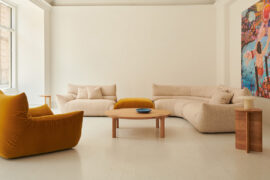
A curated exhibition in Frederiksstaden captures the spirit of Australian design
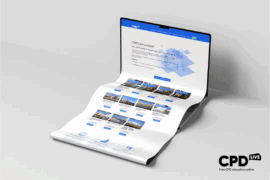
The final day of CPD Live’s 2025 season delivers three must-attend sessions exploring circular design for furniture and fitouts, and the science behind safe, high-quality drinking water. Starting from 9 AM AEDT, 16th October – it’s your last opportunity this year to join our Live CPD sessions and finish 2025 inspired.
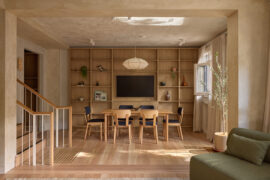
Merging residential living with the retail experience, the latest project from In Addition breathes new life into shopping for the home.
The internet never sleeps! Here's the stuff you might have missed
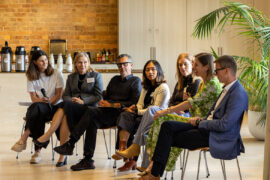
In this comment piece by Dr Matthias Irger – Head of Sustainability at COX Architecture – he argues for an approach to design that prioritises retrofitting, renovation and reuse.
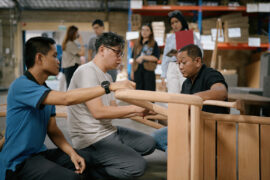
The American Hardwood Export Council (AHEC) has collaborated with leading Indonesian designer Hendro Hadinata on the KARANA Collection, unveiled at Indonesia Design Week (IDW).